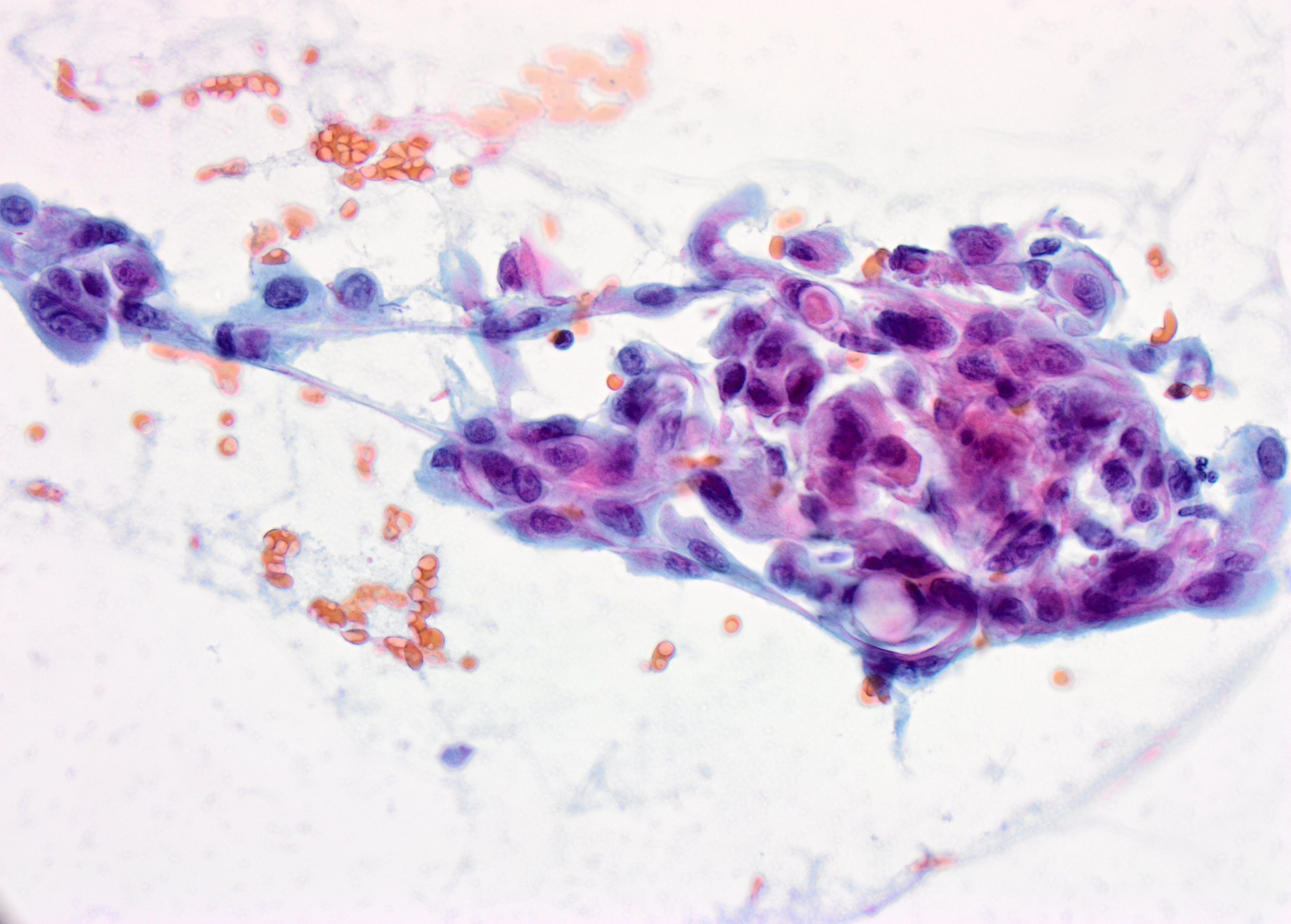August 29, 2023
A fine needle aspiration biopsy (FNAB) is a medical procedure that uses a thin needle and suction to remove a small amount of tissue or fluid from an abnormal area of the body. Doctors commonly perform this procedure on abnormal areas of tissue in the thyroid gland, salivary glands, pancreas, breast, lung, lymph nodes, and abdominal cavity. The tissue or fluid sample is then sent to a laboratory where it is examined under a microscope by a pathologist. After the examination is complete, the pathologist puts the results in a type of pathology report called a cytology report.
What does a fine needle aspiration biopsy show?
Because a fine needle aspiration biopsy (FNAB) uses suction to pull the tissue sample into the needle, most normal structures break apart into small groups of cells and single cells. For this reason, FNAB is not a good test for examining the relationship between cells in a tissue sample but it is very good at examining the features of individual cells.
The types and amount of cells seen when the sample is examined under the microscope will depend on where the FNAB was performed and the condition causing the abnormality. Samples from a tumour may show mostly tumour cells or only a small number of tumour cells surrounded by normal cells such as inflammatory cells. Fluid such as blood may also be seen in the background. Infectious microorganisms such as bacteria and parasites can also be seen. Viruses are too small to see using a standard microscope but cells infected by viruses can be seen and a test called immunohistochemistry can be used to help identify the virus.

What does it mean if my report says “positive for malignancy”?
Positive for malignancy means that cancer cells were seen in your fine needle aspiration biopsy (FNAB). The type of cancer will depend on where the FNAB was performed and the microscopic features of the abnormal cells. In some situations, your pathologist may perform an additional test such as immunohistochemistry to determine the type of cancer cells present.
What does it mean if my report says “negative for malignancy”?
Negative for malignancy means that no cancer cells were seen in your fine needle aspiration biopsy (FNAB). This result only applies to the area of tissue sampled.
What does it mean if my report says “non-diagnostic”?
Non-diagnostic means that your pathologist could not reach a diagnosis based on the tissue available. This can happen if there are not enough cells in the sample or if the cells cannot be seen clearly because other elements such as blood or mucus are in the way. It is important to understand that “non-diagnostic” does not mean that the sample was normal. “Non-diagnostic” means that the sample could not be interpreted and your doctor should consider performing another biopsy to get a better tissue sample.
Can a fine needle aspiration biopsy report be wrong?
A fine needle aspiration biopsy (FNAB) removes only a very small sample of tissue from the body. As a result, the biopsy may miss the abnormal area. When this happens your report may say that nothing abnormal was seen when the sample was examined under the microscope. In this situation, your doctor may recommend repeating the test or performing another procedure such as a core needle biopsy to get more tissue for the pathologist to examine.
About this article
Doctors wrote this article to help you read and understand your pathology report. Contact us if you have questions about this article or your pathology report. For a complete introduction to your pathology report, read this article.



